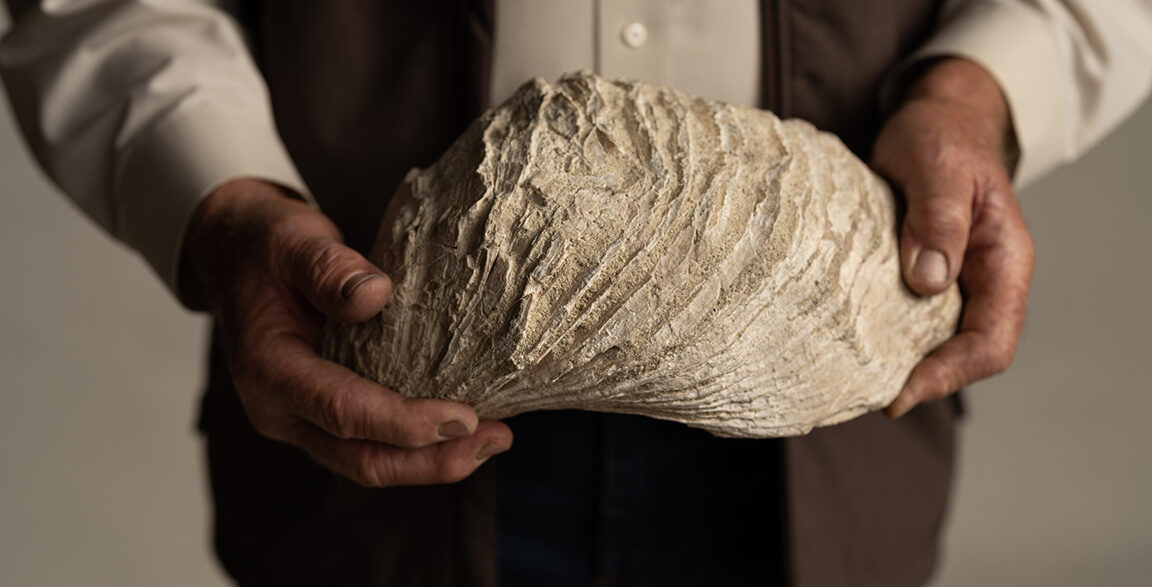Since the founding of Ancient Peaks in 2005, our estate Margarita Vineyard has become renowned for its unique growing conditions, including its complex array of soil types. Margarita Vineyard’s most spectacular soil profile is found along a section that we call Oyster Ridge—an uplifted ancient sea bed that is riddled with petrified oyster shells. Some of these giant oyster fossils are the size of footballs!
And now Ancient Peaks co-owner Karl Wittstrom, our resident historian and geologist, has unearthed an exciting book that provides unique detail into the formation, timeline and endurance of these amazing California fossils—including their incredibly apt name: Titan oysters.

A Titanic Discovery
According to the book, which is written by Joe Cocke, “The Titan oyster first appeared in the middle Miocene epoch about 16 million years ago and died out at the end of the Miocene period approximately five million years ago…About 10 million years ago, at the height of the Titan oyster’s range, they lived in a sea somewhat similar to the California coast today. Much of the Miocene sea extended far into California’s Central Valley.”
This would explain how Titan oyster fossils are found on dry land at Margarita Vineyard, which today stands 14 miles from the Pacific Ocean. One can only marvel at the tectonic and glacial forces that have made this possible over the past five million years.
And while their range was vast, not all Titan oysters were created equal. As the book notes, “One thing about oysters, especially, the Titan oyster, is that the shells from one location can vary considerably in size and shape.” We find this to be true at Margarita Vineyard, where a wide range of oyster and mollusk fossils have been found.
This much is certain: the Titan oysters found at Margarita Vineyard are forever a thing of the past: “During the millions of years they lived, they thrived,” the books says. “They built their massive reefs consisting of thousands upon thousands of shells. Why would something so successful become extinct? Many factors could have been involved. Temperature or salinity change, food supply, disease or the prehistoric seas merely drying up. We may never exactly know what caused their demise.”
Coveted Calcareous Soils
The natural question is: what does all of this natural history mean to the wines of Ancient Peaks?
At Oyster Ridge, the beds of compressed sea shells spill out of the ground as a powdery “calcareous” (or calcium-rich) soil that is intermixed with whole fossils.
This isn’t the limestone most often associated with calcareous soils, but the result is similar: a high concentration of calcium content. Many of the world’s most renowned wines, including standouts from Bordeaux and Burgundy, are grown in limestone soils. For this reason, calcareous soils are coveted by winemakers worldwide.
The high calcium content in Margarita Vineyard’s sea bed soils acts like an amped-up form of limestone, yielding wines with high-toned flavors, pretty aromatics and fine tannins. Cabernet Sauvignon and Merlot are among the varieties that excel in these soils.
When you enjoy a glass of Ancient Peaks Cabernet Sauvignon or our appropriately named Oyster Ridge red blend, you experience flavors that are rooted in the profound geological history of the great Titan oysters.
